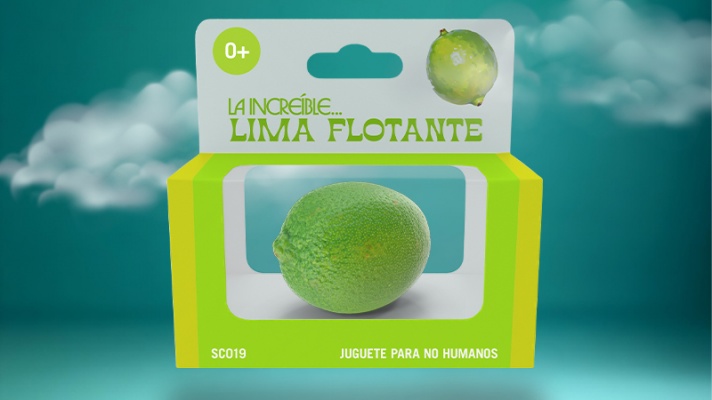Descripción de la Exposición
keeping, rafa esparza’s first solo presentation at Commonwealth and Council, brings together shivers of our shared cultural memory (what do we keep, what joys, what traumas), persons in chosen families (whom do we keep, who keeps us), limning sites of our coexistence—of at times violent struggles as well as of solidarity—out of earth lifted from the ground, garments vivified. esparza probes the forces shaping these encounters, keeping in mind his broader community, particularly of Brown Angelenos: a network bound together by shared moments of generosity, care, and pleasure, adversity too. In this new body of work, esparza populates spaces with the human and nonhuman, deceased and living, creating a place of respite where things precious and mundane can mingle and accumulate, preserved out of time yet grounded by touchstones of underlooked histories.
A spectral image mapped on a crumbling adobe panel confronts visitors upon entrance. Based on an archival photograph documenting the aftermath of the 1970 Chicano Moratorium protests in Los Angeles, esparza sketches a scene of police officers retreating. Two men struggle to bear up their kneeling comrade, vulnerable despite their riot gear. The image communicates a multivalent tangle of Mannerist limbs and also of affect: disgust, kinship, pathos, even.
In the first gallery room, a cadre of eagle sculptures circle a belt snake. Fashioned out of Nike Cortez’s, shoes that were named after the Spanish colonizer and became the most popular kicks among Chicanx youth in the ‘90s, the encounter unsettles the founding mythology of the Aztec Empire, as the snake and eagle perhaps eschew the violence that defines a predator/prey dynamic. The scene is flanked by panels painted with designs recalling backdrops from StarShots, the ubiquitous mall glamour studios that were favorite haunts of Brown youth in the 1990s. A tender tribute to the culture, to potential futures and dreams lost to structural violence perpetrated by the state and by gang warfare. Drawing on such disparate shards of collective history and personal memory, esparza constructs a landscape of Brown Los Angeles, anchored by and memorialized in these signs. A man and a child cruising in a lowrider occupy the lone figurative painting in the room, reinforcing its sense of a moment caught, of movements and histories kept, distilled into regenerative gestures: eagles and snakes coexisting, the icons of gang paraphernalia re-signified.
An adobe brick road bridges the two gallery spaces. A figure, depicted in an ambiguous state of falling or floating, obliges viewers to walk over its surface—an invitation to haptic recognition. Erosion of paint will eventually give way to bare adobe, nodding to the fading of memory, to our bodies’ ineluctable return to earth over time, as esparza’s meditations turn from the past to the present, from abstract indexical imagery to bodily representation.
A series of portraits in the second gallery room comprise a pantheon of figures, ranging from fellow artist-activists such as Black Lives Matter co-founder Patrisse Cullors and poet Yosimar Reyes to the late Mexican singer and composer Chalino Sánchez. esparza paints these figures directly onto adobe, the sun-dried mudbrick used as building material by Indigenous peoples of the Americas. In placing these Brown and Black individuals on surfaces derived from California dirt, esparza underscores their fraught relationship to the land—stolen from its original occupants; where many labor in exploitative situations and are denied shelter and support.
The bodies rendered assert their rightful presence: We are here. We belong. We keep on. Adobe, as much the subject of the paintings as the individuals depicted, presents a kind of second skin—cracking and pockmarked earthen slabs, crosscut with sinewy hay strands; familiar ground upraised in confrontation, yet with the warmth of human touch.
Collaboration defines esparza’s practice, and each portrait marks a keeping not only of a likeness but a relationship. He calls this “making images with subjects”—creating shared space where those depicted are co-agents and authors within the work. In Tayhana, a painting based on a mirror selfie, the eponymous musician slyly fakes eye contact—instead producing an image reflecting a closed loop of bifurcated monologue. Through it, esparza reveals the spectrum of browns within the bare adobe, an analog of Brown skin tone; the figure seems as if rendered directly from earth, sculpted in light and shadow, for us to keep, and remember.
rafa esparza (b.1981, Los Angeles) is a multidisciplinary artist whose work reveals his interests in history, personal narratives, and kinship, his own relationship to colonization, and the disrupted genealogies that it produces. Recent solo exhibitions have been held at MASS MoCA (2019); ArtPace, San Antonio (2018); Atkinson Gallery, Santa Barbara (2017); Ballroom Marfa (2017); and Los Angeles Contemporary Exhibitions (2015). esparza has performed at art institutions including Performance Space New York and the Ellipse, Washington, D.C. (2019); Institute of Contemporary Art, Los Angeles (2018); Museum of Contemporary Art, Los Angeles (2018); the Whitney Museum of American Art, New York (2017); Hammer Museum, Los Angeles (2016); and Clockshop, Bowtie Project, Los Angeles (2014). Select group shows were held at San Diego Art Institute (2019); DiverseWorks, Houston (2019); Craft Contemporary, Los Angeles (2019); GAMMA Galeria, Guadalajara (2019); Bemis Center for Contemporary Art, Omaha (2017); Whitney Museum of American Art, New York (2017); LA>

Exposición. 16 abr de 2025 - 11 may de 2025 / Centro Botín / Santander, Cantabria, España

Formación. 08 may de 2025 - 17 may de 2025 / Museo Nacional Centro de Arte Reina Sofía (MNCARS) / Madrid, España